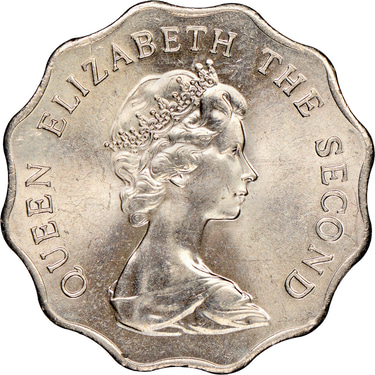Use Desktop for Better Experience
What’s the Most Important Factor When Picking Stocks?
FINANCIAL
Ryan Cheng
5/26/20254 min read


Investing in equities often feels like navigating a maze of numbers, opinions, and uncertainties. Some thrill-seekers chase high-beta stocks, hoping for outsized gains; others yearn for steady, moderate returns with limited downside. For the latter group—arguably the majority of long-term investors—the most important single factor in selecting a stock is not the latest chart pattern or macro call, but the company’s competitive position, as expressed through its market share and related economic moat.
Why Fundamental Value Alone Isn’t Enough
Fundamental ratios—P/E, P/B, ROE, EV/EBITDA, free cash flow yield—are indispensable tools. They help you gauge whether a share price reasonably reflects current and expected earnings, assets, or cash-flow streams. A low P/E might signal undervaluation; a high ROE suggests efficient use of equity; a robust free cash flow yield reveals capacity to fund dividends or delever. Yet none of these metrics, taken in isolation, tell you how durable a firm’s profits will be.
A company can report enviable margins and growth rates today, but if competitors can easily replicate its product, or if customers can readily switch, tomorrow’s returns may evaporate. That is why market share—the percentage of total industry sales controlled by the firm—is so vital. It captures both scale and competitive strength, tying client loyalty, pricing power, and economies of scale into one succinct measure.
Market Share as a Proxy for Economic Moat
An economic moat is what Warren Buffett calls the sustainable competitive advantage that protects a company’s profits from rivals. High market share often reflects one or more moat-type qualities:
Network Effects
Platforms grow more valuable as more users join. Google Search dominates because—thanks to its algorithm and sheer volume of queries—it gets smarter and more accurate the bigger it becomes, discouraging users from switching.


Switching Costs & Cost Advantage
Once invested in an ecosystem, customers find it costly or inconvenient to depart. Apple’s seamless hardware-software integration and extensive app library give its iPhone users little incentive to defect to Android.
Market leaders can spread fixed costs—manufacturing, R&D, marketing—over higher volumes, undercutting smaller rivals on price. Amazon Web Services (AWS) leverages sprawling data centers to offer cloud services at scale, squeezing out less efficient providers.
A strong brand coupled with a vast distribution network amplifies market share. Consumers gravitate toward familiar names; retailers and partners prioritize proven sellers.
Brand and Distribution




Case Studies: Monopoly in Action
Apple (Smartphones & Wearables)


With over 50% share of global profits in the smartphone industry—despite sub-20% unit share—Apple commands premium pricing and clinches high margins. Its loyal customer base feeds recurring hardware upgrades, services subscriptions, and accessory sales.




Alphabet/Google (Search & Advertising)
Google accounts for roughly 90% of global search queries. Advertisers follow eyeballs: higher search share translates directly into pricing power for ad slots, which fuels Alphabet’s dominant free-cash-flow generation.
In the U.S., Amazon controls over 40% of online retail sales. Its logistics muscle and AWS leadership give it two powerful engines—consumer and enterprise—each reinforcing the other through customer data and operational scale.
Amazon (E-commerce & Cloud)
How to Measure & Incorporate Market Share
Measuring and incorporating market share into your stock-picking process begins with defining the total addressable market (TAM)—the overall size of the industry in which the company operates. By consulting public filings, industry reports, and trade-association data, you can quantify the industry’s total annual sales or user base. Once you have that benchmark, divide the company’s segment-specific revenue by the TAM to calculate its market share, and then track that percentage over multiple years. A steadily rising share suggests the company is outpacing peers and consolidating its position; a stagnant or declining share may signal weakening competitive strength.
But market share alone tells only half the story. You must overlay profitability metrics to see whether higher share translates into better returns. If expanding share coincides with rising gross or EBITDA margins, the business is not only winning customers but doing so more efficiently—evidence of a widening economic moat. Next, “stress-test” the moat by considering potential disruptors: new technologies, regulatory shifts, or changing consumer preferences that could erode the company’s advantage. Even a firm commanding 40 percent of its market today can lose ground quickly if a competitor offers a more compelling solution or a regulator imposes onerous new rules.
Finally, dominant market share often justifies a valuation premium. Investors are generally willing to pay higher P/E or EV/EBITDA multiples for businesses that generate predictable cash flows, face lower default risk, and enjoy sustainable pricing power. Yet this premium only makes sense if the company’s share gains are paired with healthy free cash flow, prudent capital allocation, and management’s clear commitment to defending its moat. The ideal investment combines a leading or fast-rising market share, robust profitability, reasonable valuation, and a team dedicated to innovation and brand stewardship—ensuring both stability and value creation over the long run.
